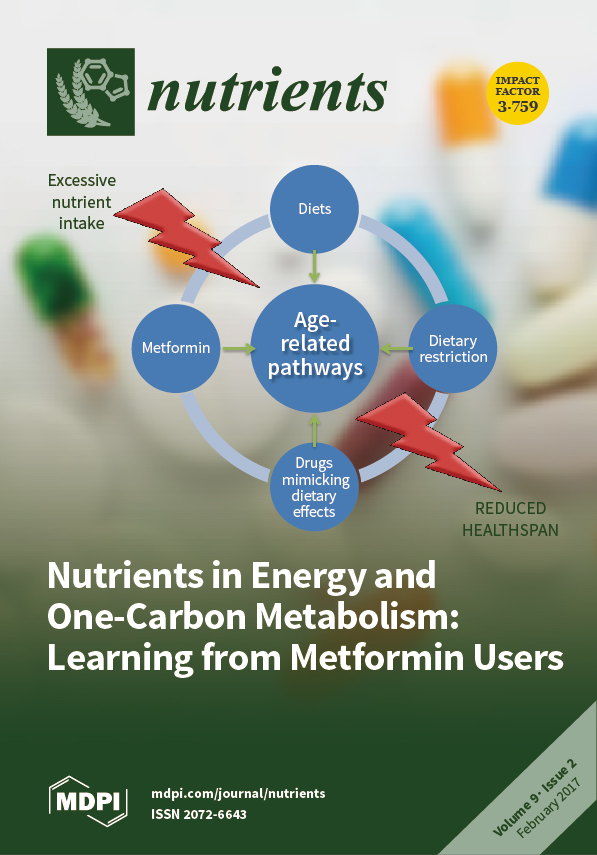Omega-3 long chain polyunsaturated fatty acid supplementation (
n-3 LCPUFA) for treatment of Autism Spectrum Disorder (ASD) is popular. The results of previous systematic reviews and meta-analyses of
n-3 LCPUFA supplementation on ASD outcomes were inconclusive. Two meta-analyses were conducted; meta-analysis
[...] Read more.
Omega-3 long chain polyunsaturated fatty acid supplementation (
n-3 LCPUFA) for treatment of Autism Spectrum Disorder (ASD) is popular. The results of previous systematic reviews and meta-analyses of
n-3 LCPUFA supplementation on ASD outcomes were inconclusive. Two meta-analyses were conducted; meta-analysis 1 compared blood levels of LCPUFA and their ratios arachidonic acid (ARA) to docosahexaenoic acid (DHA), ARA to eicosapentaenoic acid (EPA), or total
n-6 to total
n-3 LCPUFA in ASD to those of typically developing individuals (with no neurodevelopmental disorders), and meta-analysis 2 compared the effects of
n-3 LCPUFA supplementation to placebo on symptoms of ASD. Case-control studies and randomised controlled trials (RCTs) were identified searching electronic databases up to May, 2016. Mean differences were pooled and analysed using inverse variance models. Heterogeneity was assessed using
I2 statistic. Fifteen case-control studies (
n = 1193) were reviewed. Compared with typically developed, ASD populations had lower DHA (−2.14 [95% CI −3.22 to −1.07];
p < 0.0001;
I2 = 97%), EPA (−0.72 [95% CI −1.25 to −0.18];
p = 0.008;
I2 = 88%), and ARA (−0.83 [95% CI, −1.48 to −0.17];
p = 0.01;
I2 = 96%) and higher total
n-6 LCPUFA to
n-3 LCPUFA ratio (0.42 [95% CI 0.06 to 0.78];
p = 0.02;
I2 = 74%). Four RCTs were included in meta-analysis 2 (
n = 107). Compared with placebo,
n-3 LCPUFA improved social interaction (−1.96 [95% CI −3.5 to −0.34];
p = 0.02;
I2 = 0) and repetitive and restricted interests and behaviours (−1.08 [95% CI −2.17 to −0.01];
p = 0.05;
I2 = 0). Populations with ASD have lower
n-3 LCPUFA status and
n-3 LCPUFA supplementation can potentially improve some ASD symptoms. Further research with large sample size and adequate study duration is warranted to confirm the efficacy of
n-3 LCPUFA.
Full article






